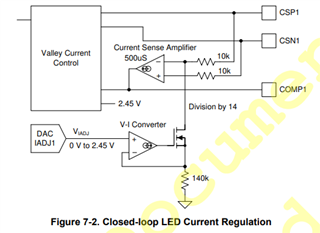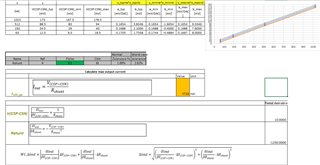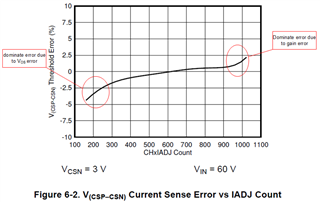Hello expert,
I'm trying to calculate the output current accuracy, some detail data of this device need your help.
1.What is the tolerance of the 10k and 140k resistor? I think it will impact the "division by 14' performance.

2. what is the tolerance of the offset voltage between CSP1 and CSN1?I think it also impact the output current accuracy calculation.

3.Is there any bias current via CSP1 and CSN1? It is missing in the datasheet but I think it also impact the calculation.










